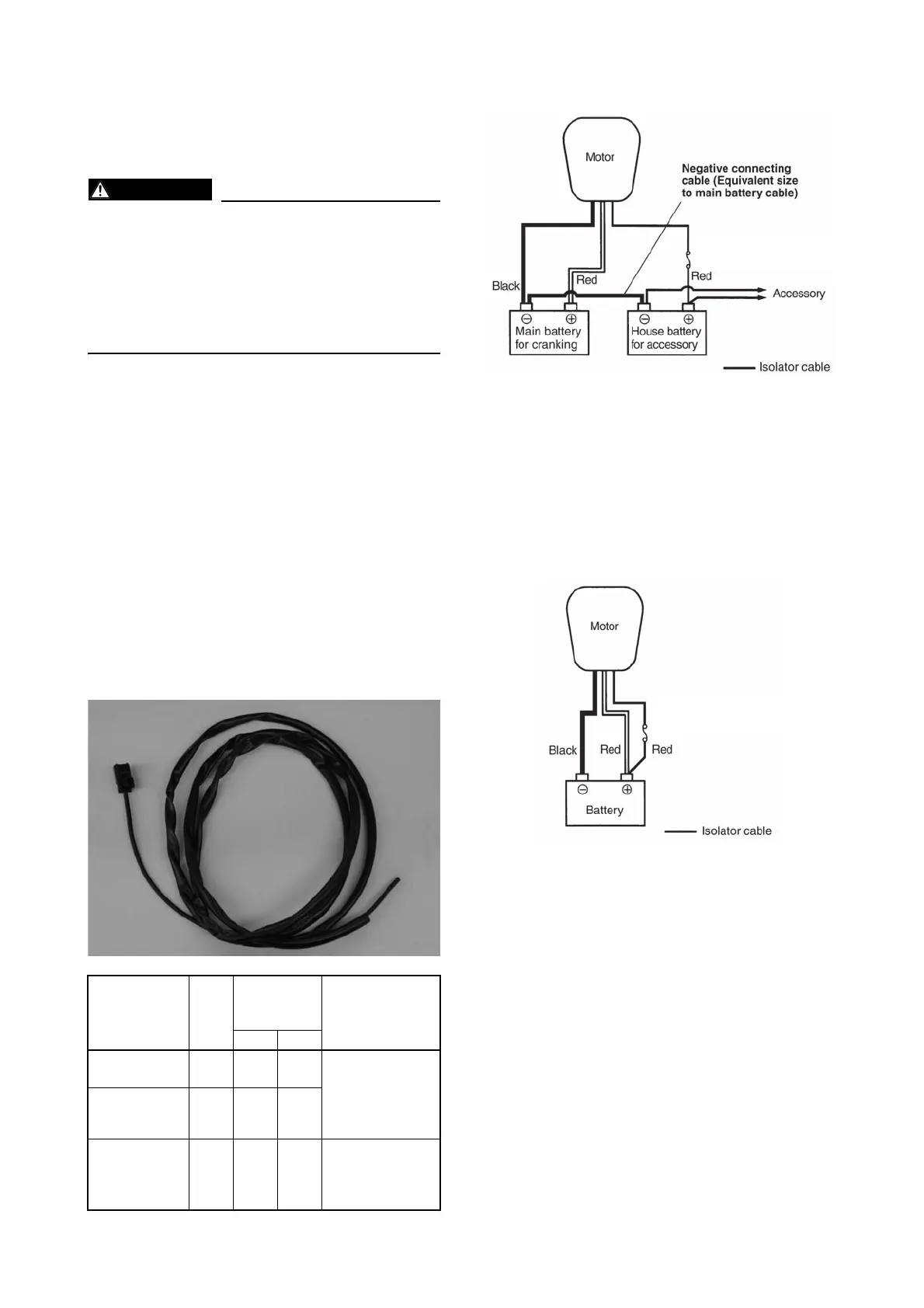8-6
BATTERY WIRING
ISOLATOR EQUIPPED MODEL (ABOVE
150PS MODEL)
Battery electrolyte is poisonous and dan-
gerous, causing severe burns, etc. It con-
tains sulfuric acid. Avoid contact with skin,
eyes, or clothing.
Read the safety and maintenance instruc-
tions which are accompaniment to your
battery.
Do not coil and/or loop the battery cable even
if the cable has surplus for routing.
When using a house battery, recommended
the same capacity as the main battery is for
cranking the engine.
For twin-battery wiring, a battery cable for (–)
terminal connects between the house battery
and the main battery.
The battery cable size needs to be equivalent
to the main battery cable.
Depending on the model, an optional iso-
lated charging cable is available for a house
battery.
When one battery is used, connect the red
cable with large diameter and the isolator
cable with small diameter to the (+) terminal.
The isolator cable needs to be connected to
(+) battery terminal, because an accidental
contact of the isolator cable to the ground will
form a short circuit and may cause a fire.
If plural batteries are used for multi-engine
installation, all (–) terminals should be con-
nected to the same ground.
Obey the local over-current protection compli-
ance such as ABYC part E-11 for wiring the
battery cables and connecting to a conductor.
* Follow the local rules and/or regulations if your
battery is scrapped.
Part No.
Length
Conductor
cross-sec-
tional area
Remarks
AWG mm
2
68F-81949-02
2.7 m
9 ft
10 5
For HPDI, F150
and above
* Except F225 –
F300 offshore
(V6-4.2L)
69J-81949-02
3.8 m
13 ft
10 5
6CE-81949-00
3.8 m
13 ft
515
For F225, F250,
F300 offshore
(V6-4.2L) spe-
cial
Appropriate fuse
(conforms to ABYC E-11)
Appropriate fuse
(conforms to ABYC E-11)

